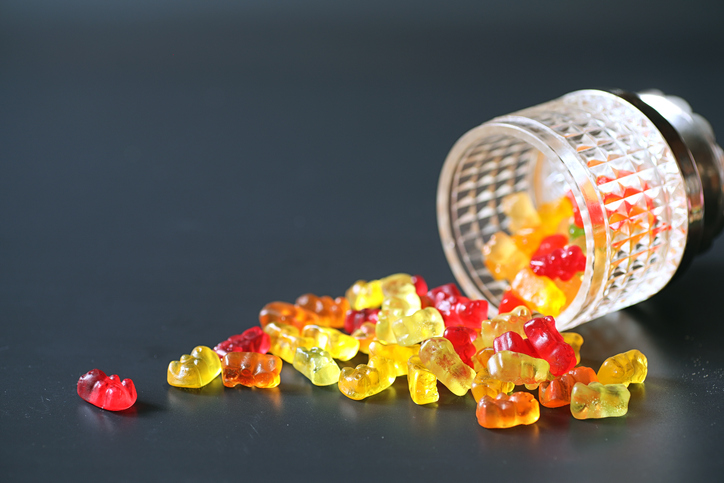CHECK OUT OUR MEDIA MENTION IN DAIRY FOODS
19-Dec-2022
“The best defense is a good offense” is an old adage frequently heard during NFL football telecasts. And even GOATs (greatest of all time) like Tom Brady and the Tampa Bay Buccaneers know that all too well this season. To keep consumers from “collapsing” during cold and flu season, 84.51°, a Cincinnati-based data company, notes that in the midst of high concerns about COVID-19 as well as flu threats, consumers are seeking protection with over-the-counter remedies and supplements.
At 53%, tissues are the top item shoppers are stocking up on, followed by cough drops (49%), disinfectant sprays/wipes (49%), hand sanitizers (46%), and everyday multi vitamins (44%), 84.51° reports. Rounding out the list of must have’s are cough medications (42%) and Ibuprofen (40%).
Just like protecting the quarterback is important, giving the body the nutrients/supplements it needs to stave off infection and boost immunity is crucial. According to MarketsandMarkets, the global Food Fortifying Agents market — minerals, vitamins, prebiotics, probiotics — is projected to reach $128 billion by 2027, growing at a compound annual growth rate (CAGR) of 10.1% from 2022 to 2027.
When looking solely at the probiotics market, MarketsandMarkets estimates its value at $57.8 billion in 2022, and projects a reach of $85.4 million by 2027, recording a CAGR of 8.1%. Impacted by price, consumer comfort, and COVID-19, the online distribution channel segment for probiotics is expected to increase to an all-time high CAGR of 9.2% by 2027, analysts predict.
Demand for prebiotics also is growing. “Global consumer interest in prebiotics has seen an increase from 51% in 2018 to 61% in 2022,” explains Kyle Krause, product manager of functional fibers and carbohydrates, North America, for BENEO. “With two-out-of-three consumers worldwide agreeing that gut health is key to achieving holistic well-being, it’s not surprising that prebiotic functional fibers are entering the mainstream for consumers across the world.
“As gut health moves from the sidelines into the mainstream, the future of products supporting digestive health looks strong,” he continues. “The key to success, however, lies in the ability of producers to deliver fiber-enriched foods in palatable and more enjoyable ways — also in less expected categories.”
In November, the Parsippany, N.J.-based company known for producing functional ingredients from natural sources announced it is investing 90 million euros ($88.9 million) into its production plant in Pemuco, Chile, increasing its global capacity of chicory root fibers by 30% while reducing energy consumption by 35%.
BENEO’s prebiotic chicory root fibers Orafti Inulin and Oligofructose, as well as Orafti Organic (introduced by BENEO in 2020), can be easily incorporated into a variety of dairy products, including milk, yogurt, cheese, cream cheese, ice cream, dairy desserts, and smoothies, as well as within fruit, chocolate and other syrups/inclusions that are used within dairy products. The fibers also are suitable for plant-based dairy alternatives, he adds.
According to infographics from Pinterest, one’s gut hosts between 500 and 2,000 species of microorganisms such as bacteria, yeast, parasites, and viruses. While the body contains 100 trillion microbes, less than 5% of microbes cause depression, irritable bowel syndrome (ibs), cancer, and arthritis. Yet, the gut — also known as the second brain — and its bacteria creates 95% of the body’s serotonin thereby influencing behavior.
Choosing the right pre-, pro- or postbiotic strains can help with unintentional weight gain, fatigue, sickness, and digestive health, experts note.
Yet, while the two “p’s” play a distinct role in digestive health, Hannah Ackermann, a registered dietitian, and senior manager at COMET, Schaumburg, Ill., says consumers don’t always understand the ingredients’ differences.
“The gut microbiome is home to trillions of bacteria, both good and bad. Probiotics are the ‘good’ bacteria that fight off ‘bad’ bacteria in the gut and help establish a healthy microbiome,” Ackermann explains. “Prebiotics are soluble fibers often found in grains, vegetables, and fruits (bananas). They are nondigestible, meaning human enzymes cannot break them down. As a result, prebiotics work symbiotically with probiotics, serving as food for the good bacteria and promoting their growth.
I like to say that prebiotics act as a fertilizer for the good bacteria in our gut — they nourish and fuel growth.”
A combination of probiotics and prebiotics — synbiotics — also are becoming more common, says Stacey Smith, marketing and communications manager for North America at Gnosis by Lesaffre.
“This means we’re supplying the actual bacteria plus the food the bacteria need to thrive,” she says. “Beverages [with pre- and probiotics] are growing by almost 15%, while snack foods are around 5.5%.”
Smith notes that the Lille, France-based company has a large portfolio of key prebiotics and probiotics, many of which can be blended together to support efficacy and create a more compelling end product for consumers.
“This biotics blend combines the complementary effects on immunity of LifeinU BSCU1 and Lynside Immunity Prebiotic. LifeinU BSCU1 supports immunity by increasing significantly durable sIgA levels, and at the same time, Lynside Immunity Prebiotic supports microbiome diversity,” Smith says.
LifeinU BSCU1, a unique and patented strain of bacillus subtilis, has been clinically proven to support the immune system and is suitable for dietary supplements and functional foods and beverages, she adds.
An interlinked connection
Today’s consumers recognize that multiple aspects of their health are interlinked and research bears that out, states Joe O’Neill, vice president of sales and business development at Fairfield, N.J.-based A&B Ingredients.
“Numerous studies have demonstrated the close connection between digestive health and immunity, prompting consumers to seek foods and supplements that can help them support both functions,” O’Neill explains. “Prebiotic fibers, such as chicory root fiber (inulin), support a healthy digestive system and, in addition, offer various technical functions, including fat and sugar replacement in formulations. The demand for low-fat, low-calorie, and keto products have fueled the growth and use of chicory root fiber (prebiotic).”
Among the company’s offerings are PA5051, Pediococcus Acidilactici vegan probiotics, which have been shown to reduce inflammatory biomarkers, thus helping to modulate the immune system, and
Fibruline chicory fiber (inulin) which provides food for good gut bacteria.
Citing Innova Market Insights and their identification of “Gut Glory” as a 2022 Top Trend, Phil a’Becket, senior consumer insights manager at FlavorSum, Kalamazoo, Mich., suggests that consumers readily associate pre-, pro- and postbiotics with gut health and immune health. Increased consumer awareness and knowledge about a well-regulated and balanced microbiome and consumers using “food as medicine” amid COVID-19 is driving usage of biotics as functional ingredients.
Yet, a’Becket suggests that even as far back as 2010, probiotics was “universally understood” among consumers who correctly associated probiotics with “maintaining the natural balance of organisms in the intestines,” but only 10% correctly identified prebiotics as “used to feed healthy bacteria.”
As to what applications work best for prebiotics, probiotics and postbiotics, Vaughn DuBow, global director of marketing for Microbiome Solutions at Chicago-based ADM, suggests beverages, dairy and alternative dairy brands as preferred consumption formats.
The opportunity to leverage innovative offerings containing microbiome-supporting solutions to market is strong. “Consumers already perceive a strong connection between gut health and certain dairy categories, such as yogurt and kefir,” DuBow explains. “For instance, Greek yogurts and dairy-based smoothies saw accelerated year-over-year growth in 2021, which may be attributed to their consumer-perceived health halo. From flavored milks to yogurts and more, offerings that incorporate prebiotic fiber, probiotics and postbiotics are increasingly hitting the marketplace.
“With heightened interest in plant-based dairy alternatives, over half of global consumers are taking a more flexitarian approach to their diet — incorporating both animal-based and plant-based proteins,” he continues. “We are also seeing this reflected in the demand for functional offerings. New plant-based dairy alternatives with added prebiotic fiber, probiotics and postbiotics are providing more optionality to consumers.”
More functional options for highly sought-after nutritional attributes is paying off in the dairy industry. According to Information Resources Inc.’s John Crawford, who serves as vice president of client insights-dairy, total probiotic and prebiotic sales within the edible section grew 16.7% to $3 billion in total U.S. multi-outlets and convenience stores for the 52 weeks ending Sept. 4.
Within Dairy15 — Milk, Cream/Creamer, Natural Cheese, Processed Cheese, Cream Cheese, Cottage Cheese, Sour Cream, Butter, Margarine, Yogurt, Rfg Whipped Toppings, Rfg Dips, Rfg Desserts, Ice Cream, Fz Novelties — the total Dairy15 pro/prebiotic section posted solid 11.9% growth and $1.1 billion in dollar sales.
Not surprisingly, yogurt, at 84.8%, represents the lion’s share of probiotic and prebiotic dollar sales, which grew 10.8% to $898 million. At No. 2, milk (12.2% dollar share) grew dollar sales 25% to $129 million, while cottage cheese saw 0.7% dollar share, Crawford says.
“In total edibles, only Baby Formula/Electrolytes ($1,201M +26.5%) and Rfg Tea/Coffee ($375M +4.1%) are larger for pre/probiotic claims sales than yogurt,” Crawford says, noting that all channels except drugstore drove dollar growth.
While Crawford notes that Dairy15 categories have more on-label claims of probiotics versus prebiotics, Icon Foods CEO Thom King points out the efficacy of probiotics is still in question. “Prebiotic fibers have peer reviewed studies from the FDA, as well as the NIH, baking their efficacy in gut health,” he explains. “The human microbiome, or the gut, is believed to be responsible for 80% of the human immunity system. Recent studies bolster the fact that prebiotics have a positive effect on the human microbiome, which translates to better immunity.”
Top Health Focuses data from Chicago-based SPINS LLC supports this trend. When looking at the dollar percentage change for probiotics in multi-outlets and natural enhanced grocers for the 52 weeks ending Oct. 2, immune health is No. 1 with $7.1 million in total revenue and a 34.4% dollar change. Cold and flu rose 17.8% to just north of $10 million, while the prenatal and postnatal category posted 15% growth and $8.3 million in sales. Rounding out the Top 5 were cognitive health, up 9.1% to $11.5 million, and mood support, with $9.6 million in sales, a 9% year-over-year (YoY) increase.
When looking at the same percentage change data for prebiotics, immune health once again was top of mind, with a 60.6% YoY change and total revenue of $6 million. No. 2 was cleanse and detox with 41% growth and $19.2 million in revenue, followed by sleep (16.5% growth, $3.3 million), cognitive health with revenue of $40.6 million (15.7%), and prenatal and postnatal at 7.2% growth and revenue of $22 million.
In May, Chicago-based Fonterra USA conducted a nationally representative survey with adults aged 18 years and older and found that 65% of respondents who regularly take probiotic supplements are using them for digestive health, 35% for immunity, 20% for weight management, 19% for better skin, 18% for mood/stress and 12% for feminine care.
A microcosm of organisms innovate
According to Mintel, in the United States, there are 1,734 SKUs where “probiotic” is featured across 18 dairy categories, ranging from yogurts to cheeses to milks, but largely in yogurts. There are 235 SKUs where “prebiotic” is featured, across 15 dairy categories, again, largely in yogurts. None of the three SKUs where “postbiotic” is featured are in dairy categories.
Jenna Nelson, EpiCor channel lead for functional food and beverage, notes that Minneapolis-based Cargill is researching ways of affecting the microbiota by adding probiotics or modulating it with prebiotics. Through this, she explains, it became clear that there’s another ‘biotic that can support the gut microbiome and immune health: postbiotics.
“While pre- and probiotics may be better known, it’s postbiotics that deliver the final goods,” Nelson emphasizes. “They are produced through fermentation outside the body, under highly controlled conditions, and include amino acids, vitamins, short-chain fatty acids, and more. Each postbiotic is unique, based on the microorganism, the fermentation medium and method used, and the post-fermentation process.”
EpiCor postbiotic, made using baker’s yeast (Saccharomyces cerevisiae), undergoes a natural fermentation process, which creates a unique fingerprint of metabolites. After the fermentation process, it is gently dried using a proprietary heating process that kills off the yeast, while still preserving all the metabolites and functional compounds, Nelson says.
More than a dozen published studies, including multiple human clinical trials, show that EpiCor postbiotic supports the gut microbiome, as well as immune health and nasal comfort, Nelson says.
More in-depth research continues. In late July, San Diego, Calif.-based Sun Genomics, creator of Floré, a fully customized precision probiotic, and Nutiani, an ingredient-solution brand from Fonterra, announced an expansion of its partnership. The goal is to better understand the health benefits of probiotics.
In September, the companies launched the second phase of a joint six-week clinical trial — “Project Happy.” The pilot study tested Nutiani’s LactoB HN001 strain with 52 Floré customers to determine if there were any significant improvements in mental wellness and happiness. After 60 days of consuming a probiotic formulation and rating their psychological well-being on the Oxford Happiness Questionnaire, participants’ mean happiness score increased.
“The difference between the data was statistically significant, showing that participants felt happier after taking the probiotics,” says Fonterra’s Marshall Fong, senior global marketing manager, Active Living. “It’s clear that a healthy digestive system is linked to good overall health and that the microbiome is involved. These ingredients impact the microbiome and are connected in that way. Additional studies will bring more clarity as to if and where they might work better together or separately. Studies on our Nutiani HN019 and Nutiani HN001 probiotic strains show a wide range of benefits including those in digestive health, immunity, women’s health, mental well-being, and skin health.”
ADM recently introduced ES1 D (Bifidobacterium longum subsp. longum CECT 7347), which can be incorporated into dairy and plant-based dairy alternative products, from yogurt to frozen treats. And in human and in vitro trials, ES1 has shown potential to have positive effects on gut barrier integrity, DuBow says.
“Emerging preliminary evidence suggests ES1 may help support gastrointestinal health in gluten-sensitive individuals, along with potential digestion and overall gut function support,” he explains.
When it comes to prebiotic dietary fiber to support the intestinal tract, ADM/Matsutani LLC’s water-soluble Fibersol, backed by more than 30 years of clinical research, provides added fiber to help nourish intestinal flora, is neutral in flavor and color, and supports the signature creamy texture in dairy products due to its low viscosity, heat-, acid-, shear-, freeze- and thaw-stability, DuBow states.
“Fibersol also mitigates concern for gastric discomfort often associated with fiber-fortified products, as it’s well-tolerated at up to 68 grams per day and ferments more slowly in the large intestine,” he adds.
Meeting wellness needs
According to the National Health and Nutrition Examination Survey, nine in 10 Americans are not meeting their daily dietary fiber needs. Creating convenient fiber applications is pivotal to closing the gap, COMET’s Ackermann says.
“Unlike other prebiotic fibers, Arrabina is clinically proven to be gentle on the stomach, at doses as high as 15 grams per day. We have multiple grades of Arrabina to meet every formulation need,” she says.
As a result of new functional ingredients, the dairy foods industry is in an excellent position to capitalize on consumers’ interest in maintaining digestive health.
“Expect to see prebiotic fiber incorporated into a wider variety of formats in coming years, including RTD coffee drinks, ice cream, and yogurt,” she says. “By incorporating prebiotic fiber into existing products already a part of daily routines, consumers can more easily meet their gut health needs and the recommended daily fiber intake.”
A multisourced ingredient supplier, Icon Foods offers FibRefine P90 Soluble Tapioca Fiber, a low-viscosity, soluble prebiotic dietary fiber that can replace many of the functional properties of sugar and increase fiber, while achieving caloric reduction, King says.
Resistant dextrin, a prebiotic or soluble vegetable fiber, also can support a healthy gut microbiome. “We derive our resistant dextrin through the enzymatic breakdown of tapioca starch — extracted from cassava, a tropical root vegetable. This results in a true dietary fiber that is ideal for both keto and diabetic diets,” King explains.
While there are challenges of using prebiotics, probiotics, and postbiotics in dairy and nondairy products — heat, oxygen, and acidity — several ingredient companies are creating new ingredients to combat those issues. For example, ADM’s award-winning BPL1 A (Bifidobacterium animalis subsp. lactis CECT8145) and its heat-treated counterpart target factors relevant to aspects of metabolic health.
“Since heat-treated BPL1 undergoes a heat-treatment process and contains nonviable microorganisms, it can withstand harsh processing conditions like pasteurization and high heat, often used in dairy offerings,” ADM’s DuBow says. “Plus, formulators don’t have to make adaptions for live colony-forming units (CFUs) due to the strain’s innate robustness.”
AB&B’s O’Neill points out that pasteurizing and retorting have an effect on the survivability of probiotics. “One of the great benefits of PA5051, Pediococcus Acidilactici probiotic, is that it is heat tolerant up to 185 degrees Fahrenheit and stable when exposed to oxygen, which makes it easier to work with and formulate into products compared to other probiotics,” he states. The shelf-stable ingredient also provides the benefits of live and active cultures in dry mix beverage applications.
Brian Schlatter, northeast representative at Fromagex, Rimouski, Canada, asserts that the biggest challenge in manufacturing a product is whether there is enough incubation time for the biotic to produce beneficial effect. The company distributes the probiotic Nutrish BB12 that is designed to be added along with the cultures that are used in making the product, he says.
As consumers remain vigilant in seeking functional solutions to naturally improve gut health and immunity, dairy categories like spoonable and drinkable dairy yogurt that incorporate pre-, pro- or postbiotics will remain on trend.
“These two categories make up 66% of North American product introductions from Q4 2018 through Q3 2022, despite representing only 16% of total launches,” FlavorSum’s a’Becket says, citing Mintel research. “These categories have historic associations with digestive/gut health due to the use of live cultures of beneficial bacteria in the production process. The inclusion of other biotics in addition to the probiotic live cultures is a natural extension for formulators who want new products to stand out on store shelves.” While smaller than their traditional dairy-based counterparts, some plant-based yogurts, and plant-based milk formulations are stepping up to the plate to incorporate the three p’s. “Plant-based yogurts and milks contributed 10% of launches over the last four years to their respective categories but accounted for 1 in 4 introductions with pre-, pro-, or post-biotic ingredients,” a’Becket concludes. “More new product innovation will be forthcoming.”






